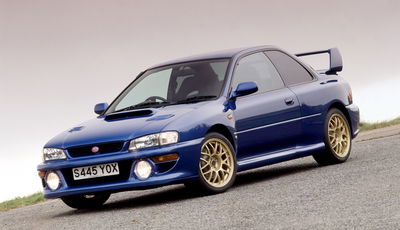GT Omega ART Review: An Entry-Level Sim Cockpit Punching Above Its Weight

There’s nothing more important in your sim racing setup than how you mount your hardware. We all have to start somewhere - whether it’s clamping your wheel to a desk, a cheap wheel stand, or even to an ironing board (surprisingly effective, by the way) - but there’s no greater improvement you can make than your mounting point.
With that in mind, if you want to take the hobby seriously and if you have the space, a dedicated cockpit is a no-brainer. These can get pretty expensive though - especially as you start to look towards several hundred pounds worth of aluminium profile rig that everyone on the internet thinks you must have.
Do you really need to spend that much? Well, that’s where an option like the GT Omega ART comes in. For £199.95 without a seat (we’ll get to that in a bit), it’s positioned as an entry-level way to get a rigid frame without going completely overkill on your wallet.

Assembling the ART is a reasonably beginner-friendly task. Instructions are limited to a single sheet with a visual guide, but there’s not a huge amount of separate parts and assembly is logical. The kit includes all the tools you’ll need to put it together, too.
It took me about two hours from unpacking to final assembly, though a lot of that time was spent figuring out how to mount my seat - something instructions don’t really help you with. If you’ve had any experience with this before, you can probably save yourself half an hour.
By not including a seat as standard, GT Omega gives you a lot of choices with how you want to go with your setup. It’ll sell you one of its own in varying sizes - I’ve been running the rather comfy RS6 which adds an extra £190 to the price tag - or you can fit any seat that uses universal slider mounting points.

How tricky or not fitting your sim hardware is depends on your chosen kit, but the rig features mounting points for most mainstream brands - including recent Fanatec, Moza, Logitech and Thrustmaster wheelbases and pedals. Anything more specialist and you may have to drill your own holes.
Fitting my Fanatec GT DD Pro only took around 10 minutes, although I should point out that with my two-pedal CSL setup, I could only bolt two of the four mounting points. It does mean the brake pedal isn’t quite flush with the pedal tray, but there have been no noticeable movement issues in use.
It doesn’t take up a huge amount of space once fully put together, measuring about 130cm in its shortest configuration. A set of extension bars is included if you need a bit more space to stretch out.

I’ve been running it in its shortest configuration, however, and there’s still plenty of adjustment. At 5’10”, I’m bang-on average and have had no issues with finding a good balance between wheel height adjustment and being able to slide the seat far back enough to still reach the pedals. The pedal tray itself includes tilt adjustment, but no movement backwards or forwards.
The frame itself is made from steel, which isn’t going to offer the same level of rigidity as a higher-priced aluminium rig, but it’s still very sturdy. For its price, I’d anticipate most people using this with lower-end direct-drive wheelbases such as the Fanatec CSL DD or Moza R5 or belt-driven offerings like the Logitech G920 or Thrustmaster T248.
Running my GT DD Pro (which is mechanically identical to the CSL DD) with the optional 8Nm boost kit has thrown up next to no issues with flex. With the wheel at full torque, you do notice some small jolts when it’s being stressed to the max but it’s rare and I suspect anything less powerful would be flawless.

The beauty of the ART is its modularity so, should you decide to opt for a more powerful wheelbase in the future, you can upgrade the cockpit rather than having to buy a whole new setup. £34.95 gets you an additional set of support bars towards the front of the wheelbase, which I have no doubt would eliminate those very small issues with flex at the power I’m running.
A gear shifter mount is included for the price too, which is a nice touch and not very common with sim rigs at any price, while built-in supports allow you to bolt on an optional monitor mount should you wish. I could spend another four paragraphs listing more, but the point is the modularity is commendable and should allow you to keep adding parts over the course of a few years without having to spend a fortune on replacing the setup entirely.
In all, the GT Omega ART is more than an entry-level sim racing cockpit, it’s a leg-up into taking the hobby seriously. It’s punching above its price point, and for many, may be the only rig you’ll ever need.















Comments
No comments found.